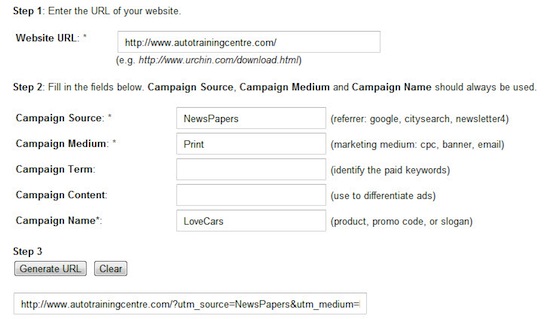As we’ve said often in the past, Google Analytics is at the heart of analytics-driven marketing. It is a powerful analytics tool that allows us to measure, report, analyze and optimize numerous marketing initiatives and channels.
With Google Analytics, you can create a series of benchmarks, metrics and goals, which allow you to see, in real time, how your marketing is performing, where it is succeeding and where it can be improved. This information removes the guess work from decision making, maximizing marketing dollars and strategies.
What Marketing can Google Analytics Measure?
Google Analytics can help you track, measure and analyze:
- Search Engine Optimization campaigns
- Pay Per Click marketing campaigns
- Banner ads
- Email marketing
- Social media marketing
- Mobile marketing
- And more
It is, however, also a great tool to track and measure offline marketing efforts, including ads in newspapers and magazines, on billboards, radio and TV.
How to Measure Traditional Ad Campaigns With Google Analytics
Google Analytics can help you track your audience’s reaction to offline campaigns and measure its ROI. What, for example, is the return on investment for an ad your school is running in the metro? Want to know if the contest your school is running on the radio is worthwhile? Google Analytics can tell you where your dollars are going.
Tracking and measuring the effectiveness of traditional offline advertising campaigns has always been difficult, which is a major problem when you consider the high costs involved in producing ads for television, radio and print. To get around this problem, most traditional advertising campaigns encourage people to visit websites. This is partly a reflection of reality (most people today research online before doing anything) and partly a necessity (doing so helps track the ad’s effectiveness).
Measuring an offline campaign with Google Analytics requires the emphasis of a website, but it takes it one step further (simply asking people to visit your website makes it hard to know where they are coming from). To properly gauge an offline ad’s effectiveness, you have to use a vanity URL. A vanity URL is a new address created specifically for this campaign.
Offline marketing vanity URLs can be:
- A sub-folder on your site (e.g. University.com/OpenHouse)
- A sub-domain (e.g. OpenHouse.University.com)
- An entirely new domain (e.g. YourOpenHouse.ca)
For vanity URLs to work, you need to redirect to relevant landing pages. An example of this would be LoveCars, which was used as a vanity url for the Automotive Training Centre.
This vanity URL redirected to the school’s home page but also included certain campaign variables (which you can ask a webmaster to apply). What happens, therefore, is that when the vanity url loads it then redirects visitors to the proper page but includes these applied campaign variables to track activity.
The added benefit to using vanity URLs is this is that these pages can be written with specific personas or target audiences in mind, ensuring that your messaging is clear and direct.
What other ways have you used Google Analytics to measure offline campaigns?






